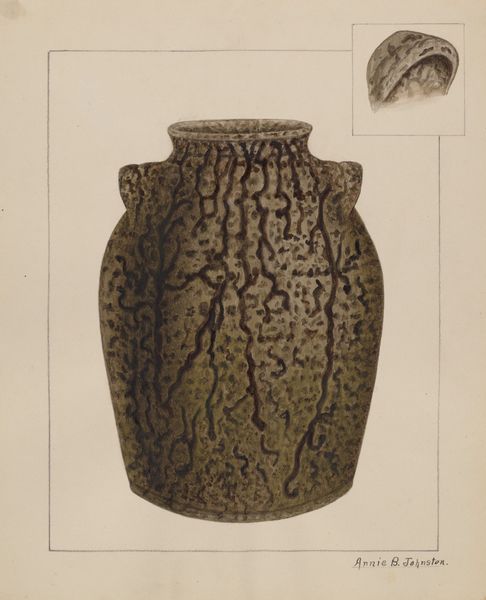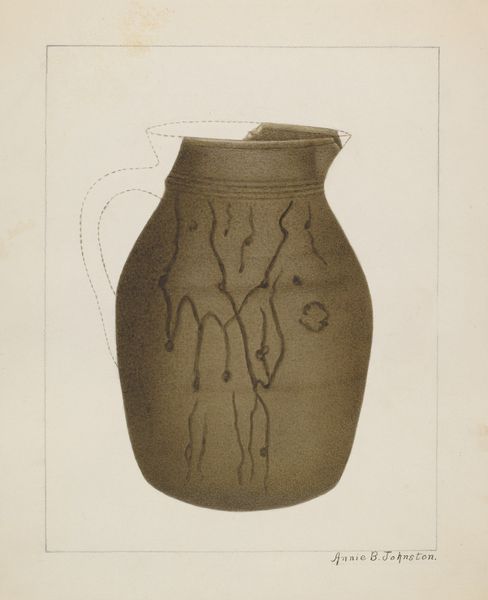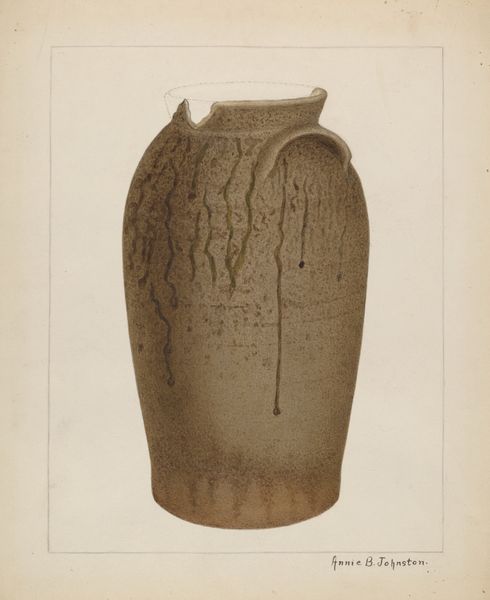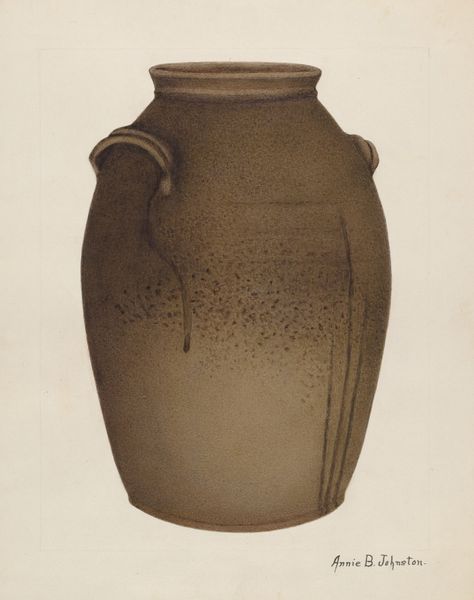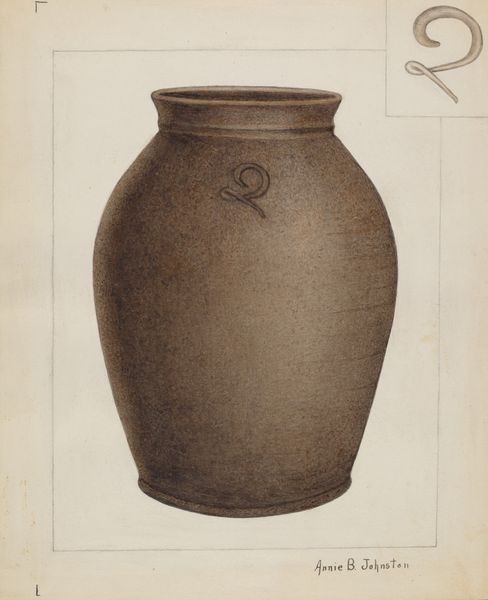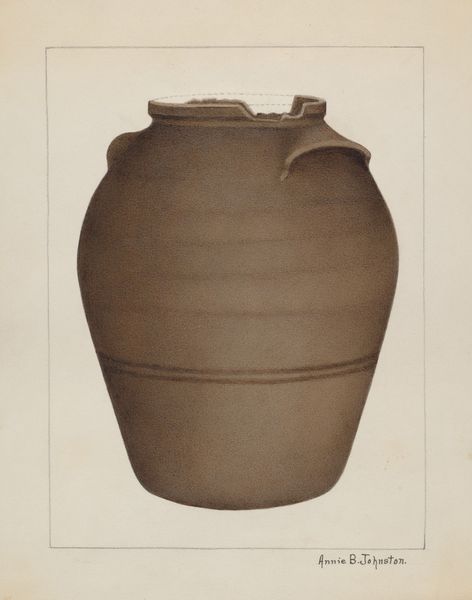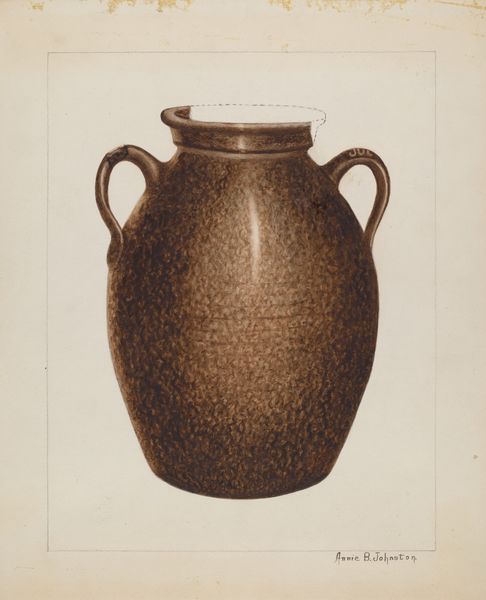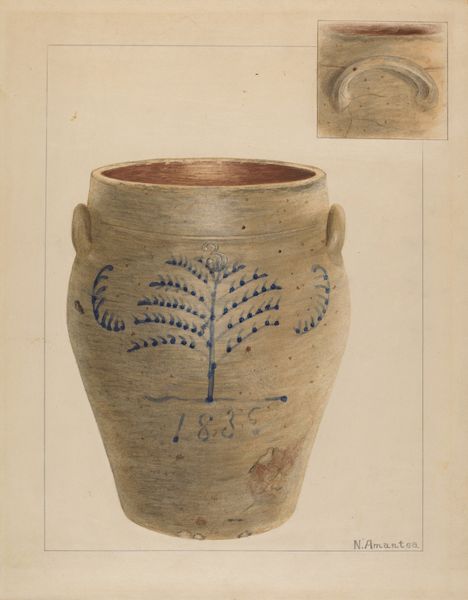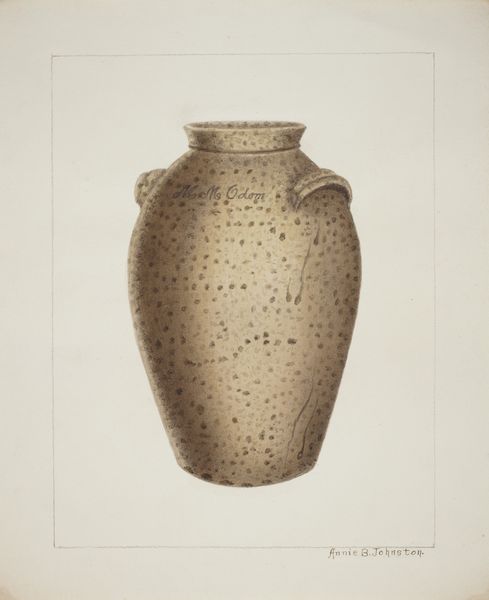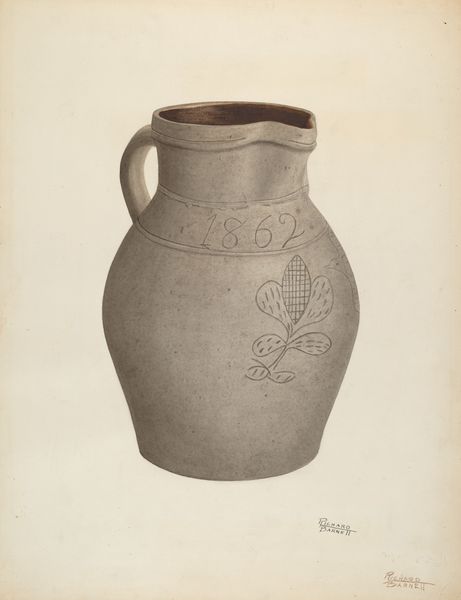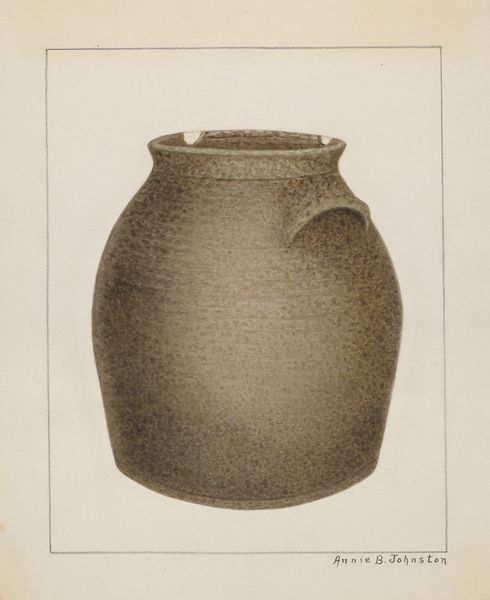
drawing, paper, ink, earthenware
#
drawing
#
paper
#
ink
#
earthenware
#
pencil drawing
#
stoneware
#
watercolor
Dimensions: overall: 28.1 x 23 cm (11 1/16 x 9 1/16 in.) Original IAD Object: 13" High 9 1/2" Dia.
Copyright: National Gallery of Art: CC0 1.0
Curator: This work is a drawing titled "Stoneware Jar," created around 1937 by Annie B. Johnston. The piece combines ink, watercolor, and pencil on paper to depict, well, a stoneware jar. Editor: It has this earthy, almost melancholic quality. The subdued color palette gives it a sense of age, like it's a relic from a bygone era. The composition also creates a mood of gentle wear. Curator: The image captures not just the form but potentially the very texture and materiality of the earthenware, speaking to a deep appreciation for vernacular craftsmanship. Johnston’s choice to depict the jar against a plain background puts all the focus on a culturally ubiquitous but often overlooked utilitarian form. It speaks of valuing folk art. Editor: I'm drawn to these almost dendritic, branching patterns trailing down the jar. It reminds me of the natural wear from water or some organic interaction over time. Water, growth and vessel like it is an echo from the ancient world. Is it referencing something specific? Curator: Possibly, though pinpointing an exact meaning can be tricky. One might speculate the 'veins' could symbolize the jar's connection to the earth, the raw materials that birthed it. These streaks of water might imply an engagement of the object in domestic settings like watering, fermentation and bathing which could carry significant meaning within a household or society. Editor: It creates a really grounded effect overall; simple and dignified. Also, it’s interesting how she included that cross-sectional drawing in the top right; is this maybe about process? Curator: Yes, it is likely showing careful construction and the maker’s knowledge, but equally that element elevates a study of utilitarian craftsmanship to one of artistic skill. Editor: This piece brings to mind an enduring sense of the beauty inherent in everyday objects. Its symbolism is quiet yet evocative, asking us to think about function and deeper associations. Curator: Agreed, and seeing it presented as art encourages us to reappraise and recontextualize humble, functional designs that play crucial, even if under-acknowledged, roles in our everyday lives.
Comments
No comments
Be the first to comment and join the conversation on the ultimate creative platform.
